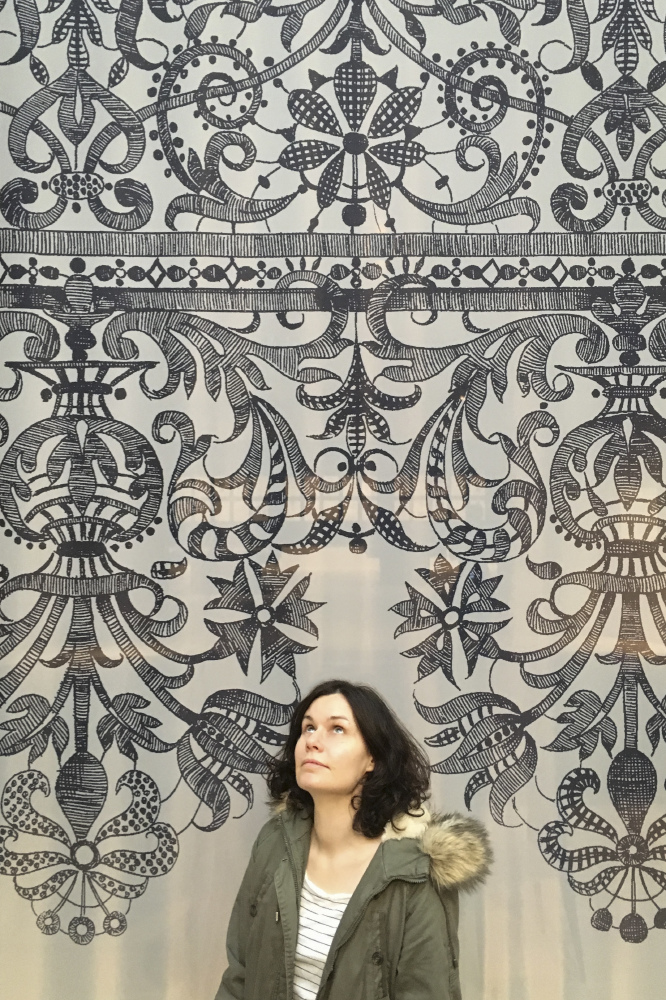What are the essential elements for a book cover?
Clear communication. It may sound obvious but key elements are the title of the book and the author's name. There are always exceptions to any rule, some covers have been known to break the rules and work really well, like Gray 318's design for The Yellow World by Albert Espinosa. As a designer it is important to me that I serve the author's words first and foremost to the book's potential audience. It is easy to get caught up with one's own design ego but I am placed to package and promote someone else's work. A good design can do this seemingly effortlessly but it takes a lot of work to get to that point.
What is your favourite book cover from those that you've read?
That's a tough question. When I take a break from reading a book I often just stare at the cover and think about how it might reflect the contents. I really love the Folio edition of The Wonderful Wizard Of Oz by L. Frank Baum, it's a cover that has stayed in my mind for a while now. The way the book case and cover interact to form the yellow brick road is perfect. The sense of narrative is deceptively simple but incredibly well thought out.
What is the process of putting a book cover together?
I have to read as much of the material available as I can, but the process is different for each designer. Sometimes you only have a synopsis and the editor to talk to and at other times there is the whole manuscript waiting for you to delve into. Reading everything possible enables me to feel that I am designing something that is truly representative of the text. I like to add layers of meaning into my cover ideas and envelope the ideas inside into a cover that entices the reader into that world inside.

Coralie Bickford-Smith, Senior Designer, Penguin Random House by Tom Lehman
I work on a lot of classic texts and do historical research. I also work up initial ideas alongside how I want the cover to be printed or produced. The way a book is printed and bound is such an important part of my working process. I work closely with the printers to create the best product possible with the budget and on schedule. It is a labour of love for me to produce book covers and one I have not tired of after 14 years at Penguin Random House.
Can authors use their own designs?
At Penguin Random house we have dedicated art teams that are very experienced in this area. We also have the editorial, and marketing teams that work with us to create the right cover for the book both creatively and commercially. Every situation is different and things are dealt with in a way that best fit that particular book and author. It is an organic process with no hard and fast rules. I had the pleasure of experiencing the process from the other side, as an author myself with both editions of The Fox and The Star. The way the team works together is very inspiring. As an author every thought and consideration I brought to the table was carefully thought about and discussed until all we came up with a plan that worked for the book and for the publishing strategy. Everyone wants a book to do well so there is a great sense of everyone listening and cheering on the project.
Can authors make changes after the design is finished if they believe it needs tweaks?
This rarely happens as the author is heard and involved all the way through the process. The author is shown early cover ideas which come out of collaborative brainstorming with the design team and the book's editor at a meeting where designers show their ideas. So any discussions about the jacket happen very early on in the process. It is important that everyone is happy before the book actually publishes and there are no surprises for the author once the design is finalised. Plus it is an ongoing process as the teams work with authors to update covers every few years to keep them fresh and relevant to the current market, well after a book is first published.
Do children's books need to follow a different format to adult book covers?
As a designer I try hard not to become too heavily involved with the format expectations of particular genres of book design within publishing. I can't speak for every designer but it is important for me to take a book individually each time and come up with ideas that are not preconceived or within boundaries. I try to give it a life and energy to each book I work on that I might otherwise not tap into if came from its preconceived angle, one of genres and presumptions of market forces. I like to shoot for the moon at the start and attempt to find a solution that is exciting and unprecedented. I enjoy the freedom Penguin Random House gives me.
Why is it important that every book cover has its own design identity?
Every book is different and each author has something new to say. I try to reflect that in how I design for each book. It's important to treat and represent every manuscript that lands on my desk as an individual and give it a place in the world.
What is next for you?
Unsurprisingly it involves more books. Alongside designing book covers at Penguin Random House, I am writing my second book and working on the paperback of The Fox and The Star, which is due to be published in October.
Coralie Bickford-Smith is a Senior Designer at Penguin Random House. For more info about book designs, check out the Penguin Random House Design Award 2016: www.penguinrandomhouse.co.uk/designaward
Tagged in Books

